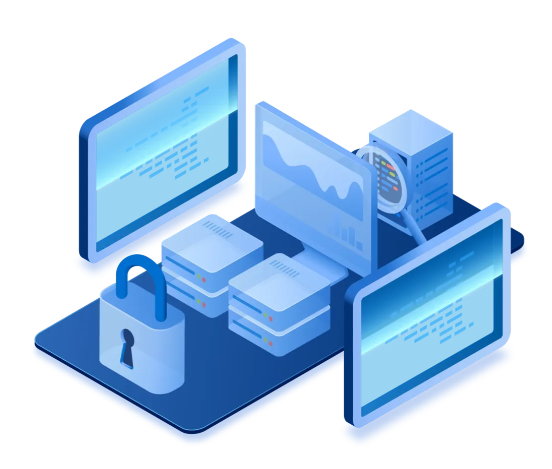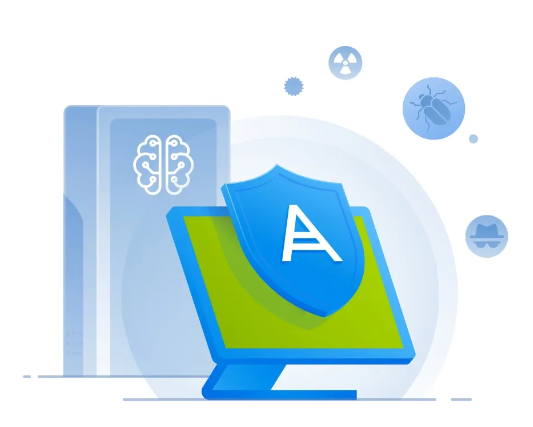Acronis Data Loss Prevention (DLP)
What is Data Loss Prevention?
Data loss prevention is a long-established category of security solutions, representing systems of integrated information security technologies that detect and prevent unauthorized use, transmission and storage of confidential, sensitive data.
DLP solutions do this by applying a combination of data flow controls and content analysis methods. Such technologies enforce business-acceptable data use and handling policies across the organization that prevent exfiltration of sensitive data to unauthorized recipients (both internal and external).
While data protection is primarily associated with backup and disaster recovery, there are other essential technologies such as DLP, notarization, and encryption that secure sensitive information against a wider variety of threats, including data leakage.
DLP is the only technology capable of providing visibility and control into the sensitive data flowing and stored across an organization to prevent its leakage to unauthorized entities.

So what leads to data leakage? There are two main causes:
- External cyberthreats
As defined by the MITRE ATT&CK framework, data exfiltration is among the last tactics that malicious adversaries carry out during an attack. The motive of actors in more than 80% of data breaches is financial gain, according to the Verizon 2022 Data Breach Investigation Report.
That’s why sensitive data is the primary target in a majority of attacks. Once malicious adversaries establish access to the corporate environment, they can try to exfiltrate data via numerous channels.
- Internal risks
While anti-malware and other endpoint security technologies are able to detect and stop external attacks, other risks for organizations’ data — insider-related ones — are gaining momentum. One common example is end users unknowingly releasing data to unauthorized parties (e.g., by forwarding an email). This can occur due to accidental employee mistakes, IT misconfigurations, or through malicious insiders — all of which can pose a severe threat to organizations — leading to the costliest data breaches
Why clients need DLP
According to the Ponemon Institute 2021 Cost of Data Breach report, the global average total cost of a data breach is $4.24 million, which is 10% higher than it was in 2020. As we see the cost of data breaches rising, the actual average time to identify and contain a breach is 287 days — which speaks to the huge risks your clients face before the breach is contained. These risks can lead to financial, reputational, and compliance costs.
What are the consequences?
- Financial and reputational damages, loss of business
- Large fines and expensive litigations
- Damage to national security


Why clients need DLP
Data leakage can be a significant risk for businesses, as it can lead to the loss of sensitive information, reputational damage, and financial losses. Here are some ways to protect your business from data leakage:
- Use encryption
- Limit access to sensitive data
- Train employees
- Monitor network activity
- Implement a data loss prevention (DLP) solution.
- Implement a data retention policy
Here are some DLP Strategies & Best Practices !
Here are eight DLP best practices that you can use to get the most value out of your data loss prevention solution:
1. Establish a DLP policy. Create a DLP policy that accounts for the data assets you need to protect.
2. Encrypt your data. Make sure all of your data is encrypted at all times.
3. Secure your systems. Use security technology to safeguard data across your systems.
4. Create a patch management plan. Patch your systems regularly to ensure their security software is always up to date.
5. Define user roles. Determine the level of data access required for users across your business, along with the responsibilities of stakeholders who will respond if data loss occurs.
6. Automate DLP processes. Leverage automation technologies to streamline DLP processes across your operations.
7. Educate your employees. Teach your employees about DLP and how they can use it to secure their data.
8. Evaluate your performance. Track your results as you try to avoid data loss. If you experience data loss, learn from the incident and explore ways to prevent the same problem from happening once again.
Remain persistent in your efforts to maximize your data loss prevention. In doing so, you can limit the risk of data loss now and in the future.
Business DLP Solution — Acronis Advanced Data Loss Prevention If you’re ready to get started with DLP, Acronis has you covered. We offer Acronis Advanced Data Loss Prevention, which secures data against leakage threats and allows you to comply with data protection mandates.
Contact us TODAY and Protect your sensitive data with the ease and speed you need!
Here are some of the other services we provide here At HostingB2B:
Recommended Posts

The Importance of Regular Website Backups
July 18, 2024



